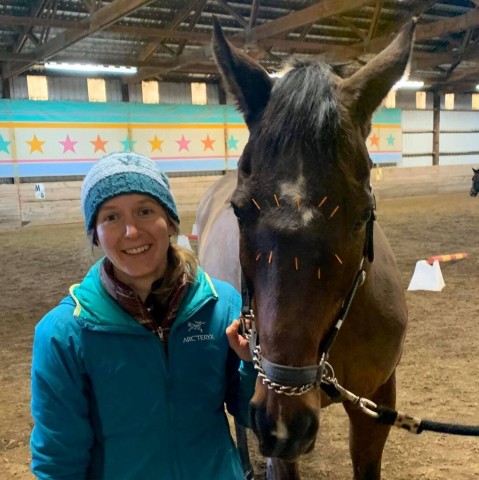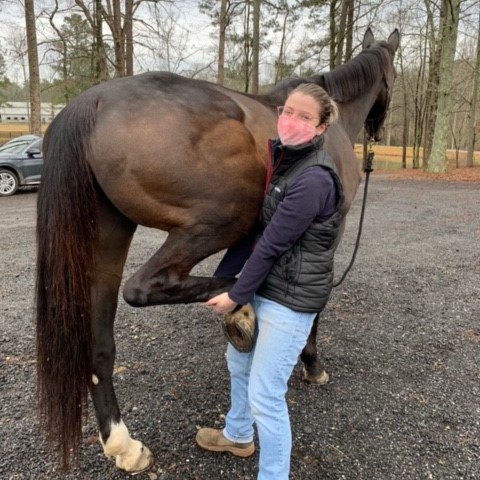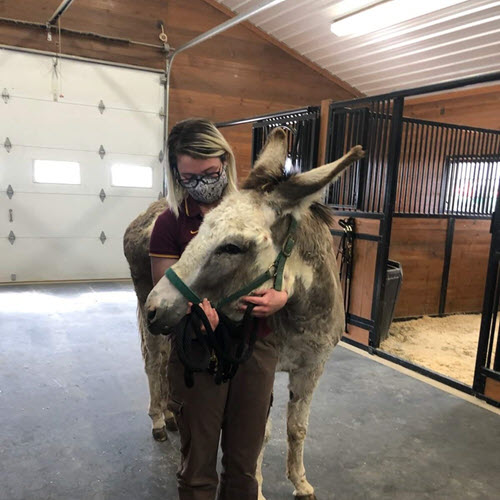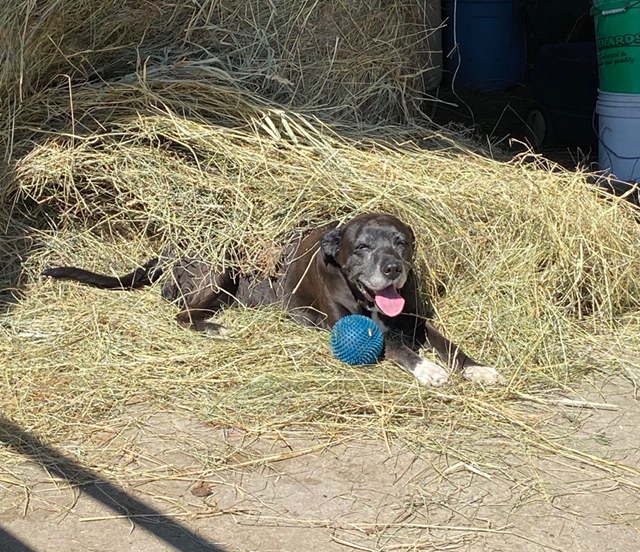Our Blog
Weitz Equine now offers Equine Acupuncture!!

Weitz Equine now offers Equine Acupuncture!! Below you’ll find some general information about acupuncture, as well as what to expect during an appointment for you and your horse.
Traditional Chinese Medicine
Traditional Chinese Medicine (TCM) is a medical discipline that developed in China about 2,000 years ago. The idea is built on the foundation of health and wellness as something that is kept in balance to provide homeostasis to living organisms. There are 5 branches of TCM: Acupuncture, herbal medicine, Chinese food therapy, Tui-Na (therapeutic massage) and Tai Chi and Qigong. While Tai Chi may not be applicable to animals, there is evidence that acupuncture was used to heal horses as early as the Han Dynasty in 206 BC. Chinese medicine created a body system run by the checks and balances of energy (Qi) which where divided into Yin energy and Yang energy. These energies, and keeping them balanced, is the medical theory behind Traditional Chinese Medicine.
What is Equine Acupuncture?
Acupuncture is defined as the stimulation of specific areas of the horse’s body, using several methods, resulting in a therapeutic homeostatic healing effect. The specific areas of the body used are considered “acupuncture points.”’ The most common methods used to treat these points in horses are traditional dry needles, aquapuncture, electro stimulation and moxibustion, although gold bead placement and infrared light stimulation can also be used.
How Does Acupuncture Work?
Acupuncture points are located close to nerve pathways, blood vessels, lymphatics areas with numerous mast cells and traverse myofascial planes. Two general actions are achieved after needle placement; promotion of self-healing and restoration of homeostasis. By placing needles at specific acupuncture sites, the body has a physiologic response to the stimulation.
Physiologic Effects
Local irritation caused by an acupuncture needle will stimulate the area and cause a body reaction called a “neurovasculoimmune regulatory response.” Among many responses to this, the body releases neurochemicals such as endorphins and dynorphines as well as a cascade of physiologically produced (endogenous) hormones to decrease pain like serotonin, dopamine and prostaglandins to name a few. These work with in the body to reduce pain and inflammation and bring the body back to a homeostatic state.
Techniques in Acupuncture
Dry Needling- The most commonly used technique in equine acupuncture is dry needling. It’s the process of taking tiny, flexible needles (these are NOT the same as hypodermic needles) and inserting them into specific areas of the body depending on what condition is being treated. Horses generally do not mind these needles being placed.
Aquapuncture- The practice of using a liquid (often Vit. B) which is injected into acupuncture sites to act as a longer lasting stimulus at the site.
Hemopuncture- A very small quantity of the patients own blood is drawn from another body location (usually the jugular vein in horses) and injected into an acupuncture site.
Bleeding- Only special acupuncture sites can be bled using a very small needle. Only a few drops of blood are released. This helps balance excess energy in the body.
Electro Acupuncture Stimulation- This is used in severe situations, for example complete nerve deficit or severe pain. Small electrical leads are attached to acupuncture needles and low frequency stimulation is applied to the needles.
Moxibustion- Moxabustion is the process of adding energy (heat) to specific dry needles that have already been placed. Moxa is an herb in the chrysanthemum family (Artemisia vulgaris) that burns very hot and is placed on an acupuncture needle for a short amount of time. Moxa has a very pungent smell. It is one of the few ways to bring energy (Qi) into a patient that is deficient.
What conditions respond best to Acupuncture? Acupuncture can be used with an integrative approach, meaning it can complement what we do with western medicine to achieve healing. It can also be used as a stand-alone method to healing and homeostatic balance. Some of its best uses include, nerve paralysis/paresis, chronic pain/inflammation, skeletal/soft tissue problems commonly experienced in equine athletes and geriatric patients.
Conditions that warrant caution with Acupuncture:
Cancer/Malignancy, pregnancy, heart conditions
What can I expect at my horse’s acupuncture appointment?
You will be asked a few questions about your horses’ normal behaviors and personality at their exam. Before the first treatment session begins, they will receive a Traditional Chinese Medicine Exam. This consists of examining the pulse quality and tongue appearance and doing a full body exam to determine sensitivity over specific areas of the body. This exam will help guide the acupuncture treatment.
How many treatments will my horse need?
The number of treatments depends on what condition we are treating and how they respond as each horse is an individual. For physiologic tune ups and performance related problems you can expect 1-2 sessions. For more severe problems such as nerve paralysis, reproductive problems, geriatric patients you should expect 2-8 sessions about 2-4 weeks apart.


